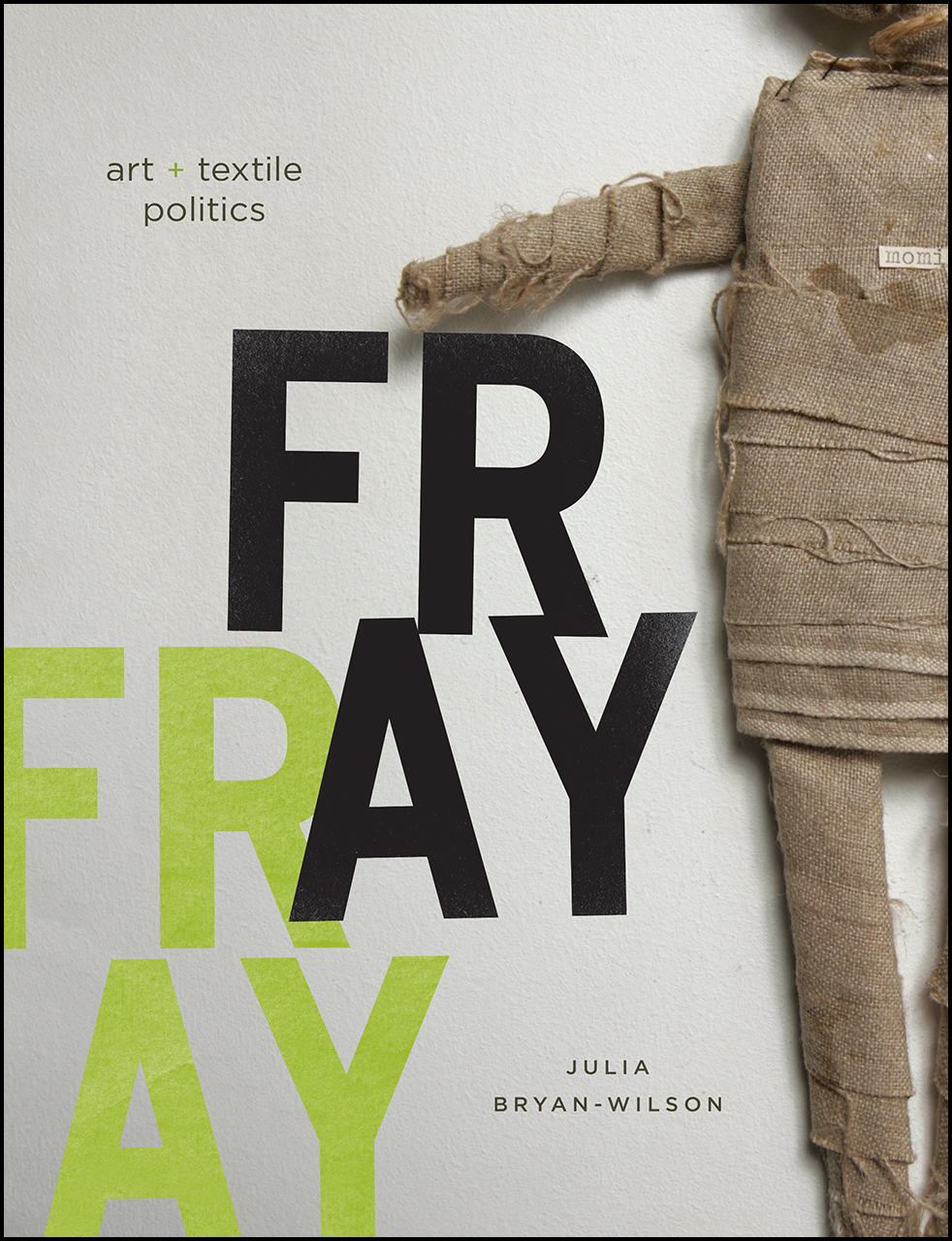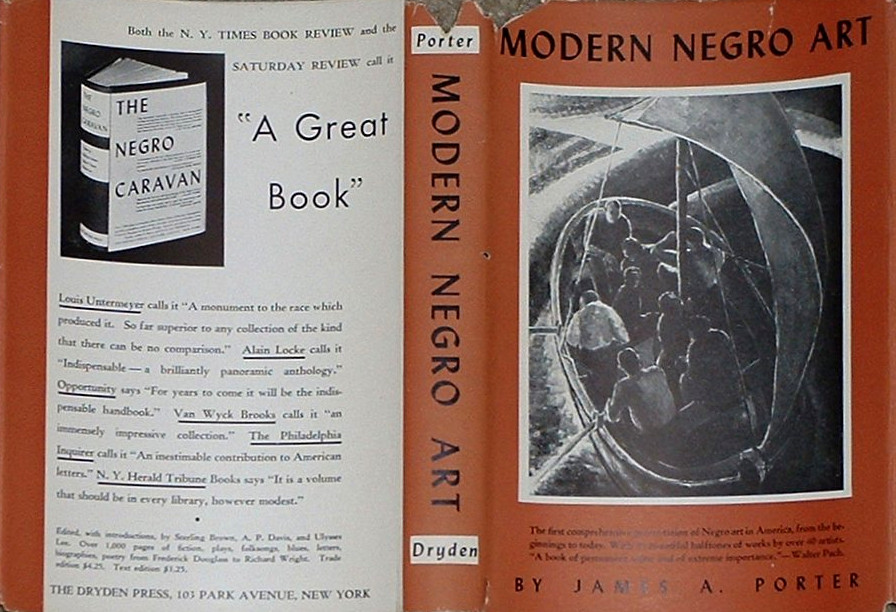Julia Bryan-Wilson: Fray: Art and Textile Politics (2017)
Filed under book | Tags: · activism, aids, art, art criticism, art history, craft, feminism, fiberwork, folk art, gender, handmaking, labour, politics, queer, quilting, race, textile, textile design, weaving

“In 1974, women in a feminist consciousness-raising group in Eugene, Oregon, formed a mock organization called the Ladies Sewing Circle and Terrorist Society. Emblazoning its logo onto t-shirts, the group wryly envisioned female collective textile making as a practice that could upend conventions, threaten state structures, and wreak political havoc. Elaborating on this example as a prehistory to the more recent phenomenon of “craftivism”—the politics and social practices associated with handmaking—Fray explores textiles and their role at the forefront of debates about process, materiality, gender, and race in times of economic upheaval.
Closely examining how amateurs and fine artists in the United States and Chile turned to sewing, braiding, knotting, and quilting amid the rise of global manufacturing, Julia Bryan-Wilson argues that textiles unravel the high/low divide and urges us to think flexibly about what the politics of textiles might be. Her case studies from the 1970s through the 1990s—including the improvised costumes of the theater troupe the Cockettes, the braided rag rugs of US artist Harmony Hammond, the thread-based sculptures of Chilean artist Cecilia Vicuña, the small hand-sewn tapestries depicting Pinochet’s torture, and the NAMES Project AIDS Memorial Quilt—are often taken as evidence of the inherently progressive nature of handcrafted textiles. Fray, however, shows that such methods are recruited to often ambivalent ends, leaving textiles very much “in the fray” of debates about feminized labor, protest cultures, and queer identities; the malleability of cloth and fiber means that textiles can be activated, or stretched, in many ideological directions.
The first contemporary art history book to discuss both fine art and amateur registers of handmaking at such an expansive scale, Fray unveils crucial insights into how textiles inhabit the broad space between artistic and political poles—high and low, untrained and highly skilled, conformist and disobedient, craft and art.”
Publisher University of Chicago Press, 2017
ISBN 9780226077819, 0226077810
326 pages
via slowrotation
Reviews: Holland Cotter (New York Times, 2017), Barbara Wisnoski (J Canadian Art History, 2018), Alexa Griffith Winton (J Design History, 2019), Janis Jefferies (Art Bulletin, 2019), Elizabeth S. Hawley (Winterthur Portfolio, 2019), Jayme Collins (InVisible Culture, 2019), Jason Edwards (Sculpture J, 2019), Katarzyna Falęcka (J Visual Culture, 2021).
Video interview with author (with Lynne Cooke, NGA, 60 min, 2017)
PDF (18 MB)
Comment (0)James A. Porter: Modern Negro Art (1943/1969)
Filed under book | Tags: · art, art history, craft, harlem renaissance, painting, sculpture

cover of 1943 edition
“Called the ‘father of African-American art history’, James A. Porter (1905-70) was not only a distinguished art historian but also a successful painter in his own right. His groundbreaking survey Modern Negro Art was the result of ten years of collecting and collating documents about the history of African-American art, from its inception to the early forties. This seminal work made visible many little-known artists, especially Porter’s contemporaries associated with the Harlem Renaissance, the African-American social, literary, and artistic movement that had been gathering force since the end of World War I.”
First published by Dryden Press, New York, 1943
Reissued by Arno Press and the New York Times, New York, 1969
viii+272 pages
Review: John Fabian Kienitz (College Art J 1944).
PDF (74 MB)
PDF (low res, 27 MB)
Néstor García Canclini: Hybrid Cultures: Strategies for Entering and Leaving Modernity (1990–) [ES, EN]
Filed under book | Tags: · anthropology, art, craft, cultural studies, hybridity, latin america, modernity, popular culture, postmodernism

“When it was originally published, Hybrid Cultures was foundational to Latin American cultural studies. This now-classic work features a new introduction in which Néstor García Canclini calls for a cultural politics to contain the damaging effects of globalization and responds to theoretical developments over the past decade.
García Canclini questions whether Latin America can compete in a global marketplace without losing its cultural identity. He moves with ease from the ideas of Gramsci and Foucault to economic analysis, from appraisals of the exchanges between Octavio Paz and Jorge Luis Borges to Chicano film and graffiti. Hybrid Cultures at once clarifies the development of democratic institutions in Latin America and reveals that the most destructive ideological trends are still going strong.”
Publisher Grijalbo, México, 1990
ISBN 9700505626
391 pages
English edition
Foreword by Renato Rosaldo
Translated by Christopher L. Chiappari and Silvia L. Lopez
University of Minnesota Press, 1995
New edition, with a New Introduction, 2005
ISBN 9780816646685
293 pages
Reviews: Jesús Martín‐Barbero (Travesia, 1992, EN)
Arnaldo Valero (Actual, 1994, ES), Ileana Rodríguez (Journal of the Midwest Modern Language Association, 1997, EN), Jesús Martín Barbero (Dominical, 2001, ES), Ivanilton Jose de Oliveira (Redalyc, 2007, ES).
Commentary: Anderson Moebus Retondar (Sociológica, 2008, ES), Luis Pulido Ritter (Cuadernos Inter.c.a.mbio, 2011, ES).
Wikipedia (ES)
Author (ES)
Publisher (EN)
Worldcat (ES)
Worldcat (EN)
Culturas híbridas. Estrategias para entrar y salir de la modernidad (Spanish, 1990, 19 MB)
Hybrid Cultures: Strategies for Entering and Leaving Modernity (English, new ed., 1995/2005, 19 MB, updated on 2022-9-22)

